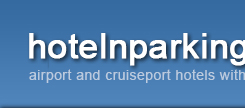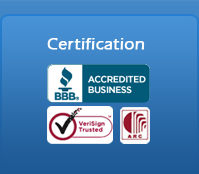Discovering the capital is probably best (and safest) by cab (which you can recognise by the red license plates). If you do drive, take care for the Lebanese driving style, which is all about being reckless and fast and using the horn a lot. Highways are in good state but smaller roads can be in bad shape, especially the mountain roads.
When driving you will come across checkpoints every now and then. When you see one, you should slow down, open your window, take off your sunglasses and wait for a handwave from the soldier which means you can drive on. They sometimes ask for your id but that nearly never happens. They are just there and you get used to them.
1. Beirut
Bustling capital on the beautiful Mediterranean. Beirut has anything you wish for on material and cultural level. As for landscapes and nature get out of this lively city and head for the countryside. It’s not exactly a beautiful city, lots of concrete and high flats, but it has a lot to offer: great museums, great entertaining, great people, great clubs and utterly great restaurants
Beirut is also a city of extremes, of old and new, of war and peace, Christianity and Islam, very rich and very poor. I think of Beirut as the city where it all happens and it happens fast, it happens with a smile and a weekly brushing for the ladies. Beirut has a heart. And it’s made of solid gold.
2. Baalbek
Impressive archaeological treasures site in the Beqa’a valley. The temple of Bacchus is the best preserved ancient temple in the world. It is larger than the Parthenon. The most famous sight in Baalbeck is the Temple of Jupiter with six large columns.

Baalbek
3.Jeita Grotto
The caves are situated in the Nahr al-Kalb valley close to Beirut, about 20 km. You could combine the visit with a visit to the zoo if you’re travelling with kids. The caves have been closed for years due to the war but are fortunately open for tourists again. One part of the tour takes place by boat, en there also is a small trip by mini cable cars at the beginning of the tour to get at the entrance of the caves. There is an upper cave and a lower cave. The lower cave can only be visited by boat since it channels an underground river. One can find the world’s largest known stalactite in the upper galleries.

Jeita grotto
4. Byblos/Jbeil
Byblos is one of the oldest cities in the world, if not the oldest, that has been continuously inhabited. It has an important archaeological site as well as a nice cosy little port with good restaurants. A good place to chill!
5. Faraya
Faraya has 42 slopes and 80 kilometers of ski tracks. It’s about a 40 minutes drive from Beirut. So you could on the perfect day, swim in the morning and ski in the afternoon. Close to Faraya you will find the village of Faqra where you can see the ruins of a Phoenician temple and a Roman tower. Next to Faqra there also is the spectacular natural bridge of Kfardebian formed by wind and water erosion. It’s 38 m and it’s hard to believe the bridge has been made by nature, it looks so perfect.

Left: Natural bridge Right: Faraya
6. Beit ed-Din
While in Lebanon absolutely do not miss the impressive palace of Beit ed-Din, built in the 19th century over a period of 30 years by Emir Bechir II. It is a gorgeous example of the Lebanese architecture in that time. It’s only about 40 km from Beirut so it’s an easy daytrip (best combined with a visit to the village of Deir el-Qamar).
The palace houses an interesting museum with a collection of weapons and jewelry and that kind of stuff as well as a Byzantine mosaic museum and an archeological museum. But honestly the palace itself is far more special then the museums.
7. The cedars
The pride and symbol of Lebanon. You can see the cedars not far from Bcharre (1840 m high) in a small forest in the mountains. The trees there are called Arz el Rab, meaning the cedars of the Lord (and they are a Unesco world heritage site). The trees there are the oldest of Lebanon and a few hundred years old, some say they could be two thousand years old. Anyway the region of Bcharre and the Qadisha Valley is gorgeous and perfect for hiking. The famous writer Khalil Gibran was born in Bcharre and one can visit the house he was born in.

Bcharre
8. Tyre/Sour
Visit the large archaeological areas, the Phoenician port, the Roman hippodrome and the old necropolis. Tyre was added to UNESCO’s World Heritage list in 1984.

Tyre
9. Deir el-Qamar
The name Deir el-Qamar means “Monastery of the Moon”. It’s a picturesque Maronite village and also an UNESCO World Heritage Site. They might as well have added the whole country as World Heritage Site at once! Visit the beautiful and typical palaces in Deir el-Qamar. A visit to Deir el-Qamar is best combined with a visit to Beit ed-Din.
10. Sidon/Saida
The old Phoenician streets of the Southern portuary town of Sidon are filled with history. Have a walk through the old town and the Souk. Have a look at the beautiful Sea Castle and the Khan al-Franj next to it. Also the soap museum is pretty and fun and you can buy authentic olive oil soap for your friends back home. The Great Mosque and the archaeological sites are worthwhile too.

Sidon
some me stuff you may want to know:
- The official language in Lebanon is Arabic but most people speak three languages: Arabic, French, English.
- The Lebanese population is divided in about 60-70% procent Muslims and 30-40% Christians.
- The currency in Lebanon is the Lebanese pound but prices are often in LBP and (American) Dollars. You can often pay in Dollars as well. In general there are lots of ATM’s everywhere.
- Medical care in Beirut is of high standard. There are lots of pharmacies and good doctors and hospitals.
- Lebanon has a Mediterranean climate with an average of 300 sunny days a year and mild rainy winters. In the winter there is often snow in the mountains and in summer it is cooler and dryer then on the coast.
- Diesel cars are not allowed in the country. (even if you beg, smile and cry at the border…I know…I tried).
10-06-2017













